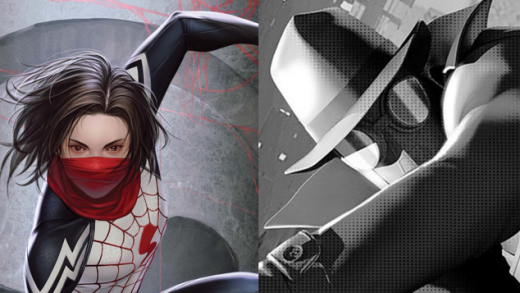On the back cover of Hanne Ørstavik’s novel Love is a one-line quotation attributed to a significantly more famous Norwegian writer. According to Karl Ove Knausgaard, “Love is Hanne Ørstavik’s strongest book.” The statement is disappointing for two reasons. It is both patently condescending and impossible for readers of English to corroborate. Unlike Knausgaard, whose 12 volumes of fiction are all available in English, Ørstavik has had only two of her 14 novels translated since her debut in 1994. The first, The Blue Room, was Ørstavik’s fourth novel overall. It debuted in Norway in 1999 and in a translation by Deborah Dawkin in 2014. The second is Martin Aitken’s translation of Love, the author’s slender third novel, generally considered her breakthrough, which arrived in February of this year, 21 years after its original release, and has been longlisted for the National Book Award for translated literature. It is in fact a “strong” and stylish portrayal of one family’s loneliness and yearning, one that ought to spur subsequent translations of Ørstavik’s work.
The Blue Room and Love are set up similarly. A single mother and her child live alone together in Norway. The child’s father is conspicuously absent and scarcely mentioned. (In Love he appears in the child’s dream and is mentioned in the child’s memory, when the mother tells her son she left her husband because she could not be “tied down.”) The characters are anxious for human connection but channel their desires in incompatible and destructive directions. In The Blue Room the mother lives with her daughter in a small loft in Oslo. When she discovers her daughter’s new boyfriend has invited her on a six-week trip to America, the mother intervenes—by locking her daughter in the apartment and refusing to let her leave. Love, which takes place over the course of a single night, reverses the flow of desire. A young mother named Vibeke has moved with her 8-year-old son Jon to a remote town in northern Norway, where she has taken a job as a cultural officer. Far from trapping Jon in their house, she pays him little attention and wishes he would “just go” and “find something to do, play or something.” She has other things to attend to, namely herself. In the space of four pages she thinks “she deserves” a “new outfit” given “the move and everything” and to sit with “a good book” because of “how well I’m doing at work.” It is Jon who wishes Vibeke would stay home but is powerless to make her do so. He comforts himself with the knowledge that his 9th birthday is tomorrow. Surely his mother is out and ignoring him because she is preparing for his big day. In fact, she has forgotten it completely and spends her evening in the company of Tom, an attractive worker from the traveling fun fair, whom she hopes might change her life. The fair is set to leave town the next day.
The book barrels forward by the force of its language. The sentences are driving, like a hammer to a nail, coming one after the other relentlessly. They are decidedly not meditative but hypnotic in their onslaught, drawing us into the continuities and disjunctions in the characters’ thought processes. When Jon is walking home near the end of the book, “He pretends he’s just landed on earth. All the people are dead. Killed by death rays. He hurries between the buildings, scurrying in the direction of the road. The tips of his ears are cold. He must have left his knit cap somewhere. He had it when he came out. He puts his hands to his ears to warm them up.” Dense and economical, the lines burst with anxious life. In the next sentence, the last and longest of the paragraph, the words move from enacting Jon’s mania to describing his paranoia: “He forces himself not to see the trees, the forest; whenever he’s on his own it’s like there’s always someone standing there.” The paragraph’s power, and that of the writing generally, is a testament to Aitken’s translation, which portrays the act of thinking not as trip down a stream but the punctuated pulse and discharge of electrical current.
Ørstavik cuts, sometimes every other page and sometimes every other paragraph, between a close third-person account of Vibeke’s night out with one carnival worker and Jon’s with another. She offers no clear transitions to ease the reader’s passage from one scene to another. If at first the continual change in perspective induces a feeling of whiplash, it quickly becomes seamless. The two streams of narrative enact the same anxious, futile search for connection (with one another) as the wandering characters and staccato language. The cuts also function as a constant source of energy for the story. Before any whiff of burnout can gather around Jon’s arc, we jump to Vibeke’s, and vice versa, and each jump ruthlessly reemphasizes the irreconcilable differences between the characters’ desires.
What of the title, Love? It is easy to take as a coldly ironic, even judgmental comment on the nature of Jon and Vibeke’s relationship: The boy loves his mother, and the mother loves herself. That is too simple and unfair to Vibeke, whose roving narcissism Ørstavik portrays in such a way as to make her both unlikable and relatable. The love in Love is mostly an isolated affair, one delimited by the bodily realities of life as a human. It is rarely shared between people, in other words. It is hemmed in by the head. Jon loves Vibeke but cannot see the myriad ways she forgets him. Like most children, he loves an idealized version of his mother. When she is out late with Tom on the eve of Jon’s birthday Jon insists “She’s been baking a birthday cake for me and there was something she’d forgotten to get, so she had to pop out.” The thought that she might be doing something entirely unrelated to him does not cross his mind. For Vibeke, other people are surfaces on which to project her vague desires for status, security, and warmth. Aside from her affection for Tom, there is an engineer she fantasizes about.
At the end of the night, Vibeke wants to sleep with Tom, but he demurs and drops her off at home instead. She looks through her windows and “thinks how empty they look, her plants always die on her.” Her practiced focus on her own life prevents her from keeping them alive. Her impotence pains her, but never too deeply. Aside from the plants, she cannot even convince Tom to go to bed with her, much less make a life with her. She cannot make him into what she wants him to be. But she can enjoy her own body—she can take baths, buy clothes, and stroke her luxurious hair. And she enjoys escaping into the many books she reads. She relishes their capacity to replace the real content of life with a carefully structured narrative. Jon opts for American cowboy-hero media and fantasies of torture, scenarios in which one party’s power is absolute and the other’s practically nil—scenarios that allow him to play roles very different from the one he occupies in his daily life, in which he is at the mercy of his mother’s wavering attention. Love is in many ways an elegant warning. Fantasy is wonderful until it is fatal.
The post Hanne Ørstavik’s ‘Love’ Marries Escapism and Neglect with Force and Beauty appeared first on The Millions.
Source : Hanne Ørstavik’s ‘Love’ Marries Escapism and Neglect with Force and Beauty








